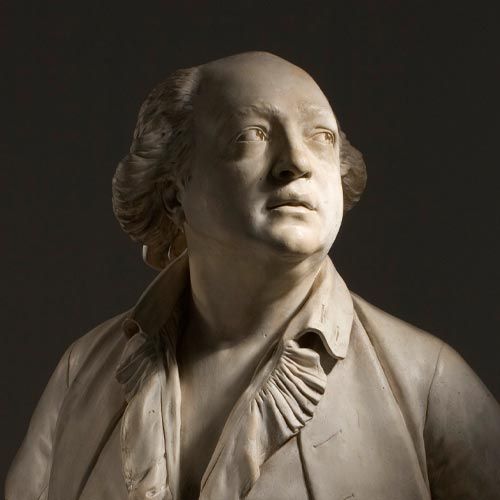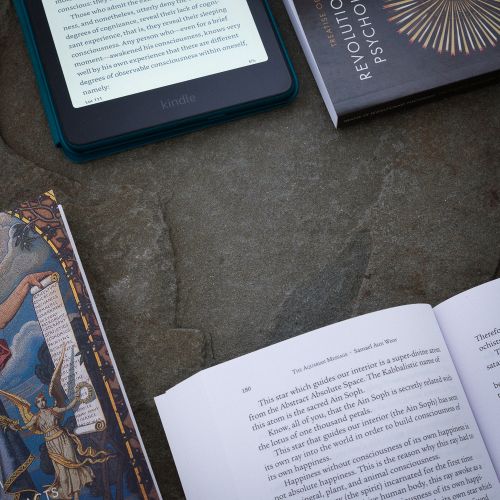
Cagliostro
"This man of indescribable age is a true master who has the Elixir of Longevity. No one can attain this elixir without having worked with the Arcanum A.Z.F...
"Cagliostro practised sexual magic intensely. Cagliostro was a disciple of Count St. Germain. Cagliostro was an alchemist; he transmuted the lead into gold and made genuine diamonds.
"This master was known in the distinct places of the world, under different names in different countries. He was known with the following names: Tis-chio, Milissa, Belonte, D’anna, Fenix, Pellegrini, Balsamo, Mesmer, Harut, and Cagliostro. This famous historical lineage was recorded by Alexandre Dumas in his work entitled, The Queen’s Necklace.
"Ragon commits the crime of slandering the Great Copto. Eliphas Levi also slanders the Count Cagliostro by accusing him of being a black magician.
"The Great Copto lived with the famous Schrader of Germany, and in England with the illustrious theosophist George Coston. Cagliostro saved the life of the Cardinal Archbishop of Rohan with the science of the Philosophical Stone.
"The Baroness of Oberkirch said the following of the Great Copto, “He was not absolutely beautiful but I never saw such equalled features. His sight, more than profound, was supernatural. The expression of his eyes was indescribable, with an equal quality of fire and ice, together influencing in an irresistible way, sometimes attracting, sometimes repelling.”
"Cagliostro had many alchemist disciples in Strasbourg.
"He was judged and persecuted by the Inquisition, sent into the bastille, and later into the fortress of Leone. The Inquisition condemned him to death, but the enigmatic and powerful Count Cagliostro mysteriously disappeared from the prison. Death could not do anything to Cagliostro.
"Cagliostro is still alive with the same physical body because when a master has swallowed soil within his sepulchre, he is lord of the living and of the dead." - Samael Aun Weor, The Aquarian Message
The "divine" Cagliostro, one moment the idol of Paris, the next a lonely prisoner in a dungeon of the Inquisition, passed like a meteor across the face of France. According to his memoirs written by him during his confinement in the Bastille, Alessandro Cagliostro was born in Malta of a noble but unknown family. He was reared and educated in Arabia under the tutelage of Altotas, a man well versed in several branches of philosophy and science and also a master of the transcendental arts. While Cagliostro's biographers generally ridicule this account, they utterly fail to advance in its stead any logical solution for the source of his magnificent store of arcane knowledge.
Branded as an impostor and a charlatan, his miracles declared to be legerdemain, and his very generosity suspected of an ulterior motive, the Comte di Cagliostro is undoubtedly the most calumniated man in modem history. "The mistrust," writes W. H. K. Trowbridge, "that mystery and magic always inspire made Cagliostro with his fantastic personality an easy target for calumny. After having been riddled with abuse till he was unrecognizable, prejudice, the foster child of calumny, proceeded to lynch him, so to speak. For over one hundred years his character has dangled on the gibbet of infamy, upon which the sbirri of tradition have inscribed a curse on any one who shall attempt to cut him down. His fate has been his fame. He is remembered in history, not so much for anything he did, as for what was done to him." (See Cagliostro, the Splendour and Misery of a Master of Magic.)
According to popular belief Cagliostro's real name was Giuseppe Balsamo, and he was a Sicilian by birth. Within recent years, however, doubts have arisen as to whether this belief is in accord with the facts. It may yet be proved that in part, at least, the tirades of abuse heaped upon the unfortunate Comte have been directed against the wrong man. Giuseppe Balsamo was born in 1743 of honest but humble parentage. From boyhood he exhibited selfish, worthless, and even criminal tendencies, and after a series of escapades disappeared. Trowbridge(loc. cit.) presents ample proof that Cagliostro was not Giuseppe Balsamo, thus disposing of the worst accusation against him. After six months' imprisonment in the Bastille, on his trial Cagliostro was exonerated from any implication in the theft of the famous "Queen's Necklace," and later the fact was established that he had actually warned Cardinal de Rohan of the intended crime. Despite the fact, however, that he was discharged as innocent by the French trial court, a deliberate effort to vilify Cagliostro was made by an artist--more talented than intelligent--who painted a picture showing him holding the fatal necklace in his hand. The trial of Cagliostro has been called the prologue of the French Revolution. The smoldering animosity against Marie Antoinette and Louis XVI engendered by this trial later burst forth as the holocaust of the Reign of Terror. In his brochure, Cagliostro and His Egyptian Rite of Freemasonry, Henry R. Evans also ably defends this much persecuted man against the infamies so unjustly linked with his name.
Sincere investigators of the facts surrounding the life and mysterious "death" of Cagliostro are of the opinion that the stories circulated against him may be traced to the machinations of the Inquisition, which in this manner sought to justify his persecution. The basic charge against Cagliostro was that he had attempted to found a Masonic lodge in Rome--nothing more. All other accusations are of subsequent date. For some reason undisclosed, the Pope commuted Cagliostro's sentence of death to perpetual imprisonment. This act in itself showed the regard in which Cagliostro was held even by his enemies. While his death is believed to have occurred several years later in an Inquisitional dungeon in the castle of San Leo, it is highly improbable that such was the case. There are rumors that he escaped, and according to one very significant story Cagliostro fled to India, where his talents received the appreciation denied them in politics-ridden Europe.
After creating his Egyptian Rite, Cagliostro declared that since women had been admitted into the ancient Mysteries there was no reason why they should be excluded from the modem orders. The Princesse de Lamballe graciously accepted the dignity of Mistress of Honor in his secret society, and on the evening of her initiation the most important members of the French court were present. The brilliance of the affair attracted the attention of the Masonic lodges in Paris. Their representatives, in a sincere desire to understand the Masonic Mysteries, chose the learned orientalist Court de Gébelin as their spokesman, and invited Comte di Cagliostro to attend a conference to assist in clearing up a number of important questions concerning Masonic philosophy. The Comte accepted the invitation.
On May 10, 1785, Cagliostro attended the conference called for that purpose, and his power and simplicity immediately won for him the favorable opinion of the entire gathering. It took but a few words for the Court de Gébelin to discover that he was talking not only to a fellow scholar but to a man infinitely his superior. Cagliostro immediately presented an address, which was so unexpected, so totally different from anything ever heard before by those assembled, that all were speechless with amazement. Cagliostro declared the Rose-Cross to be the ancient and true symbol of the Mysteries and, after a brief description of its original symbolism, branched out into a consideration of the symbolic meaning of letters, predicting to the assembly the future of France in a graphic manner that left no room for doubt that the speaker was a man of insight and supernatural power. With a curious arrangement of the letters of the alphabet, Cagliostro foretold in detail the horrors of the coming revolution and the fall of the monarchy, describing minutely the fate of the various members of the royal family. He also prophesied the advent of Napoleon and the rise of the First Empire. All this he did to demonstrate that which can be accomplished by superior knowledge.
Later when arrested and sent to the Bastille, Cagliostro wrote on the wall of his cell the following cryptic message which, when interpreted, reads: "In 1789 the besieged Bastille will on July 14th be pulled down by you from top to bottom." Cagliostro was the mysterious agent of the Knights Templars, the Rosicrucian initiate whose magnificent store of learning is attested by the profundity of the Egyptian Rite of Freemasonry. Thus Comte di Cagliostro remains one of the strangest characters in history--believed by his friends to have lived forever and to have taken part in the marriage feast of Cana, and accused by his enemies of being the Devil incarnate! His powers of prophecy are ably described by Alexandre Dumas in The Queen's Necklace. The world he sought to serve in his own strange way received him not, but has followed with relentless persecution down through the centuries even the very memory of this illustrious adept who, unable to accomplish the great labor at hand, stepped aside in favor of his more successful compatriot, the Comte de St-Germain. - Manly P. Hall, The Secret Teachings of All Ages





